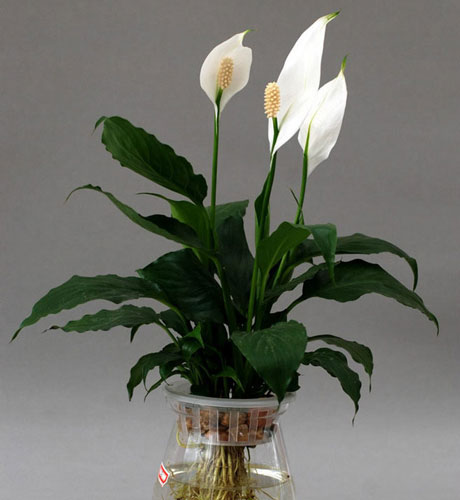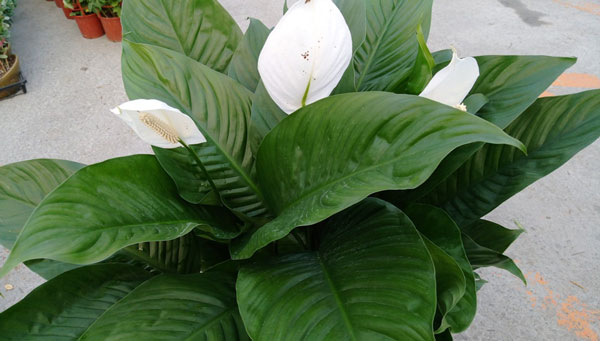Peace Lily Care: How to Grow & Care for Peace Lily Plants
Written by Iris
Feb 15 2023
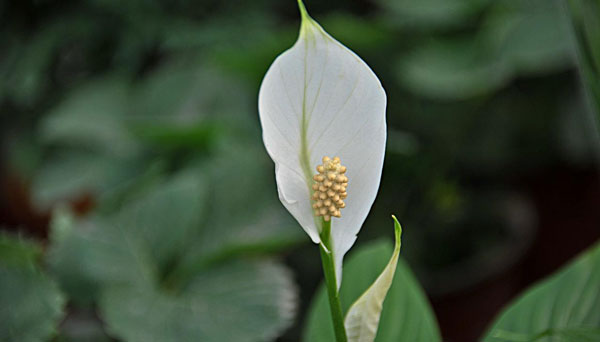
Peace Lily is a plant with both flowers and leaves. The leaves of Peace are large, dense, and shiny. The yellow-white fleshy inflorescence is covered by white buddha bracts, and the back of buddha buds also has bright green ridges. The veins, set off by the dark green leaves, are full of tranquility, elegance and refreshing feeling. Its flower shape is peculiar, like white sails floating in the green ocean, giving people a sense of smooth wind and smoothness, and people gave it an auspicious name "Smooth Sailing". Peace lilies are one of the most common houseplants. With enough light, peace lilies may bloom white to off-white flowers in early summer and continue to bloom throughout the year. They are also easy to grow and beautiful! Here are tips on how to grow and care for peace lily for everyone to take better care of it.
Though most peace lilies are grown as houseplants, you can also grow them outside if you live in zones 10 to 12. Plant them in a shady spot (where they’ll naturally get much more ambient light than if they were growing inside) in soil that's consistently slightly moist.
Steps on growing peace lily from seed
After emergence, when the seedlings grow 1~2 pieces of true leaves can be divided into potted seeds, after planting spraying thin liquid fertilizer, so that the seedlings grow strongly.
Peace lily plants that grow from seed will have beautiful leaves in 2-3 years and bloom in 3-6 years. (Read More: Peace Lily Turns Black - 10 Causes & How to Solve)
You can also use a commercial houseplant potting soil that contains organic matter. However, you should amend the soil with perlite, bark chips, or coarse horticultural sand. Organic matter such as peat moss helps to retain some moisture. And, the addition of perlite or a similar soil amendment improves drainage and aerates the potting medium.
One of the worst things for peace lily is when their roots sit in soggy, waterlogged soil. There can be a few reasons why the peace lily pot retains too much water. Some of these are:
Signs that it's becoming rootbound are: roots beginning to stick out of the drainage holes, water collecting on the surface of the potting mix because it has become too compacted for good drainage, and slowed growth even during the spring and summer.
This is also a good time to divide the peace lily plant. Take one to three crowns and give them their own new containers, following the directions outlined above.
Yellow leaves may be caused by overwatering, underwatering, or old age (of the leaf).
Scale and mealybugs will happily take up residence on the plant, if given the opportunity. A thorough wipe-down of leaves with soapy water or insecticidal soap can be effective at stopping them, though repeated applications will be necessary.
Read More: 12 Amazing Peace Lily Benefits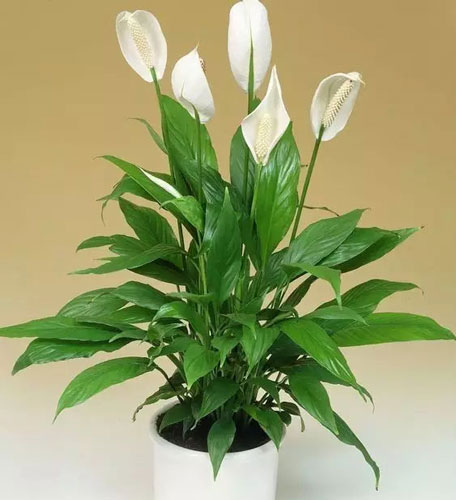
Spathiphyllum ’Power Petite’: a small variety, growing to only about 15 inches
S. ‘Mauna Loa Supreme': a very common variety, growing to 3 to 4 feet tall with leaves up to 9 inches wide
S. ‘Sensation’: the largest of the peace lily varieties; reaches up to 6 feet in height with broad, 20-inch long leaves
S. 'Mojo': a striking, large plant with vibrant green leaves
S. 'Golden Delicious': features new growth with a stunning golden-green color
S. 'Starlight': has narrow leaves with wavy margins; also known for heavy, multiple blooms, with as many as 20 flowers on a single plant 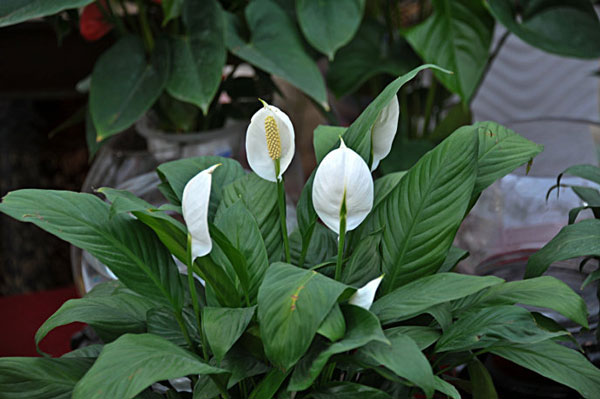
Most people buy peace lily plants when they're already in bloom. So, it can be disappointing if the plant fails to flower again. Putting the Spathiphyllum pot on an east-facing windowsill or near a south- or west-facing window in the spring may encourage blooming. A healthy peace lily in ideal growing conditions should produce several flowers annually.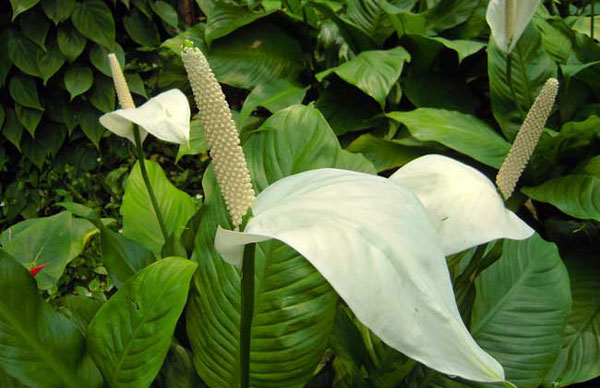
Peace Lily Quick InfoWhere to Grow Peace Lily PlantsHow to Grow Peace LilyGrowing Peace Lily from DivisionGrowing Peace Lily from SeedsHow to Care for Peace Lily PlantsPeace Lily Lighting RequirementsPeace Lily Soil CareWateringTemperature & Humidity CareFertilizerPruningPests & DiseasesVarieties of Peace LilyPeace Lily Care FAQIs The Peace Lily Plant Poisonous?Why My Peace Lily Plant Isn't Flowering?How to Make a Spathiphyllum Plant Bloom?
Peace Lily Quick Info
| Botanical/Scientific Name | Spathiphyllum |
| Common Name | Peace lily, closet plants |
| Plant Type | flowering plants |
| Plant Size | up to 16 inches tall |
| Light Requirements | Medium to low light |
| Soil Requirements | Well-draining soil |
| Bloom Time | Starting in the early summe, blooming throughout the year in the right conditions. |
| Flower Color | White to off-white flowers |
| Uses | popular indoor plants, |
| Poisonous | Mildly poisonous to humans and pets |
Where to Grow Peace Lily Plants
Peace lilies will practically grow in the closet, but that doesn't mean that's where you should put them. When grown in low light, these plants will rarely bloom. So if it's foliage you're after, go ahead and put your peace lily in a dark corner. If you want flowers, though, place it where it will receive bright, indirect light. Just make sure there aren't any drafts—since they're tropical, peace lilies are sensitive to cold temperatures. (Read More: How to Repot A Peace Lily)Though most peace lilies are grown as houseplants, you can also grow them outside if you live in zones 10 to 12. Plant them in a shady spot (where they’ll naturally get much more ambient light than if they were growing inside) in soil that's consistently slightly moist.
How to Grow Peace Lily
Growing Peace Lily from Division
You can't propagate a peace lily from a cutting, and growing it from seed takes years. But thankfully, there's a reliable and easy way to propagate this type of plant: by division!- First, you'll need to find an existing plant, preferably a mature one with several crowns. Maybe a friend of yours has a Spathiphyllum that could use dividing.
- Choose a six to eight-inch pot with drainage holes, and a draining dish to fit beneath it.
- Fill the pot with a potting mix intended for houseplants, like this one from Miracle-Gro, available at the Home Depot.
- Over a disposable tablecloth or newspapers, gently release the parent plant from its container. Choose a section of crown with at least two leaves and a healthy root system attached. Read more: Peace Lily Root Rot - Signs & How to Save
- Using your fingers or a knife, if needed, pry the crown away from the mother plant.
- Replace the original lily in her container and add a bit of potting mix if needed. Take your divided crown and plant it in your prepared six to eight-inch pot, tucking the mix in around the roots.
- Water thoroughly and place in a location in your home that receives indirect sunlight.
Growing Peace Lily from Seeds
Peace lily is rarely used for seed propagation, because the seeds of peace lily are not easy to obtain, and it takes 10 to 15 months from pollination to seed maturity. It is often used for preservation of native varieties and propagation of hybrid varieties.Steps on growing peace lily from seed
- Disinfection: peace lily seed propagation is usually done in a greenhouse, where the soil is first disinfected. Place the planting soil in the sun or water it with disinfectant.
- Soaking seeds: before sowing, soak the peace lily seeds in warm water at 40℃ for 10 hours, and sow them in a cool and slightly dry place.
- Sowing: Plant the peace lily seeds in a greenhouse pot, cover them with a thin layer of soil, and spray or soak the soil to keep it moist. When sowing, control the temperature at 25~28 degrees Celsius, if the temperature is not up to standard, can be covered with plastic film in the basin, maintain more than 80% humidity.
After emergence, when the seedlings grow 1~2 pieces of true leaves can be divided into potted seeds, after planting spraying thin liquid fertilizer, so that the seedlings grow strongly.
Peace lily plants that grow from seed will have beautiful leaves in 2-3 years and bloom in 3-6 years. (Read More: Peace Lily Turns Black - 10 Causes & How to Solve)
How to Care for Peace Lily Plants
Peace Lily Lighting Requirements
While peace lily (Spathiphyllum) will tolerate very low light, without some brightness from a window or a lamp, they are unlikely to bloom much, if at all. They can tolerate anything except direct, and bloom more the more light they receive.Peace Lily Soil Care
Use a peat-based potting soil for peace lily that has excellent drainage. Or, use a cactus potting mix as a suitable growing medium. The ideal peace lily soil should keep some moisture but allow all excess water to drain. Mix peat moss, loam, and perlite to grow healthy peace lily plants in pots. (Read more about the best soil for peace lily.)You can also use a commercial houseplant potting soil that contains organic matter. However, you should amend the soil with perlite, bark chips, or coarse horticultural sand. Organic matter such as peat moss helps to retain some moisture. And, the addition of perlite or a similar soil amendment improves drainage and aerates the potting medium.
One of the worst things for peace lily is when their roots sit in soggy, waterlogged soil. There can be a few reasons why the peace lily pot retains too much water. Some of these are:
- The peace lily has become rootbound, and water can't drain properly.
- The potting soil is too dense and needs better aeration.
- The drainage hole on the pot’s base is blocked.
Watering
Ideally, keep the soil evenly moist (not wet!) when caring for peace lily. Otherwise, water thoroughly when the soil just becomes dry but do not let the plant sit in water. Avoid allowing the plant to wilt (although peace lily will recover amazingly from wilting very badly, you’re likely to see a lot of yellow leaves as a consequence if it happens too often.) Like low light, peace lily will survive low water levels, but will never thrive as well as when proper watering is followed. Once in a while, put the plant in the shower and water the leaves to wash off any accumulated dust.Temperature & Humidity Care
Peace lilies like a consistent temperature from 65 to 80 degrees Fahrenheit. Protect your plant from drafts and cold or drastic changes in temperature. So, maybe don’t place yours by a door that opens out into the cold winter air. Read More: Why Is My Peace Lily Dying - 5 Reasons & How to ReviveFertilizer
In spring and summer, use an organic houseplant fertilizer to help your plant bloom. Keep in mind that peace lilies are sensitive to chemical fertilizers, so organic options are best.Pruning
This easy-care peace lily plant doesn't require any pruning, but do make sure to remove broken or dead leaves when you see them. If a plant becomes rootbound and grows to be too large for its container, transplant it into a larger pot.Signs that it's becoming rootbound are: roots beginning to stick out of the drainage holes, water collecting on the surface of the potting mix because it has become too compacted for good drainage, and slowed growth even during the spring and summer.
This is also a good time to divide the peace lily plant. Take one to three crowns and give them their own new containers, following the directions outlined above.
Pests & Diseases
Peace lily brown leaf tips are commonly caused by excessive light, over-fertilization, or lack of water and/or low humidity. Keeping the plant on a tray of moistened gravel or misting the leaves can help to increase humidity. Read More: How Long Do Peace Lilies LastYellow leaves may be caused by overwatering, underwatering, or old age (of the leaf).
Scale and mealybugs will happily take up residence on the plant, if given the opportunity. A thorough wipe-down of leaves with soapy water or insecticidal soap can be effective at stopping them, though repeated applications will be necessary.
Read More: 12 Amazing Peace Lily Benefits

Varieties of Peace Lily
Some of the popular peace lily hybrids include:Spathiphyllum ’Power Petite’: a small variety, growing to only about 15 inches
S. ‘Mauna Loa Supreme': a very common variety, growing to 3 to 4 feet tall with leaves up to 9 inches wide
S. ‘Sensation’: the largest of the peace lily varieties; reaches up to 6 feet in height with broad, 20-inch long leaves
S. 'Mojo': a striking, large plant with vibrant green leaves
S. 'Golden Delicious': features new growth with a stunning golden-green color
S. 'Starlight': has narrow leaves with wavy margins; also known for heavy, multiple blooms, with as many as 20 flowers on a single plant

Peace Lily Care FAQ
Is The Peace Lily Plant Poisonous?
Yes, mildly. All parts of the peace lily plant contain calcium oxalate—a substance that may cause stomach and respiratory irritation if ingested in large amounts. Keep peace lilies out of reach of small children and pets. Other common plants that contain calcium oxalate include philodendrons, daffodils, true lilies, and hyacinths.Why My Peace Lily Plant Isn't Flowering?
The most common reason why peace lily doesn't flower is a lack of bright light. Peace lily (Spathiphyllum) usually bloom in spring and needs bright, indirect sunlight to produce flowers. Although peace lily can survive in dark rooms, it won’t flower in places with poor lighting or constant shade.How to Make a Spathiphyllum Plant Bloom?
Encourage peace lily to bloom by giving it plenty of indirect light and water it appropriately. To help peace lily produce flowers, move it to a brighter location if it’s not blooming. Making sure it gets bright light can help get a non-blooming Spathiphyllum to flower repeatedly.Most people buy peace lily plants when they're already in bloom. So, it can be disappointing if the plant fails to flower again. Putting the Spathiphyllum pot on an east-facing windowsill or near a south- or west-facing window in the spring may encourage blooming. A healthy peace lily in ideal growing conditions should produce several flowers annually.

Latest Updated
- How Often And How Much to Water Peace Lilies
- Peace Lily Care: How to Grow & Care for Peace Lily Plants
- Why Is My Peace Lily Dying - 5 Reasons & How to Revive
- Peace Lily Root Rot - Signs & How to Treat
- Why Is My Peace Lily Not Blooming - Causes & How to Get Them Bloom
- How Long Do Peace Lilies Last - How to Make Them Live Longer
- Peace Lily Turns Black - 10 Causes & How to Fix
- When & How to Fertilize Peace Lilies - 2023 Essential Guide
- How to Repot A Peace Lily - When & Steps to Repot
- Overwatered Peace Lily - Signs & How to Revive
Popular Articles
- Winter maintenance of Antirrhinum Majus
- How to Grow Terminalia Mantaly Tree
- How to Grow and Care for Crossostephium Chinense
- How to grow Antirrhinum Majus in spring
- Peristeria Elata (Dove Orchid) Profile: Info & Care Guide
- Underwatered Snake Plant (Sansevieria Trifasciata) - Signs And How To Fix
- How to Care for Brazilian Jasmine Plant (Mandevilla Sanderi)
- Rosa Chinensis (China Rose): Plant Growing & Care Tips
- How to Grow & Care for Graptopetalum Purple Delight in Summer
- How to Care for Baby Sun Rose (Aptenia Cordifolia)
